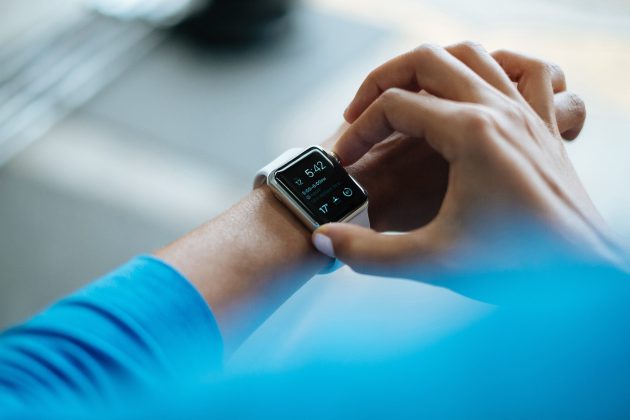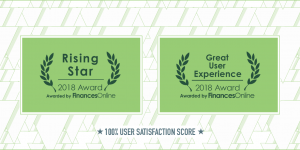Project Management is not a static topic but evolves from year to year and follows the trend of industry and the world of work in general.
There’re trends, that we can clearly see, that are increasingly influencing this profession. Some of these started some years ago and gradually take hold, others have been born only recently and abruptly.
Knowing them is necessary to maintain a strategic vision of the profession and the sector.
Let’s see then what are the trends that will affect the project management sector.
CONTENT INDEX
The Trends of Project Management: the advent of artificial intelligence
Artificial intelligence is a very current topic and there’s a real debate around it.
As with any new trend, there are also in this case two currents of idea:
- those in favor who announce it as the “reality” of the future;
- and those who are skeptical, or even frightened, of the consequences that this evolution can have not only at work but also in everyday life.
Project management can also be influenced by artificial intelligence.
Therefore should we be favourable or frightened?
In particular, when we talk about artificial intelligence applied to Project management, we talk about systems that can manage projects and their progress without the need for human input.
Not only the simplest tasks will be automated, but an understanding of the key points of the project can also be developed. In this way artificial intelligence is able, thanks to this knowledge, to perform more complex tasks, make recommendations and even make decisions.
Moreover, an artificial intelligence system can save time by improving the results of a project.

Project Management managed by artificial intelligence is a service more developed and that goes beyond what is currently offered, for example, by so-called bots.
Not even an algorithm that applies machine learning to predict activity estimates can be called artificial intelligence, although interesting and useful.
The true potential of artificial intelligence in Project Management can only be seen when you start to connect boats and algorithms.
Now we try to hypothesize what artificial intelligence applied to the Project Manangement can do.
Here some concrete examples:
- Combine the right resource with the right role: Artificial intelligence will allow not only to match the right resource to the right team/project, but also to select upstream the resources suitable for a given project
- Reduce downtime: Artificial intelligence is able to analyse the performance and the progress of each resource and assign a task/project based on the real capabilities of the individual;
- Create an ecosystem for knowledge management: When an employee for whatever reason leaves the company, part of his knowledge is non-transferable and goes away with him. In this sense, artificial intelligence can be used to centralize knowledge. This will avoid the so-called “starting from scratch” when a change takes place;
- Improve the performance of the resource by reducing the effort to a minimum: How many times we have those days when we are not in “the right mood” and spend a lot of time on a simple task? How many times, on the contrary, do we manage to complete complex activities in a very short time? Artificial intelligence can help the project management system associate the best task to the right resource at the best time of day, suggesting the planning of activities in a personalized, unique and variable way;
- Provide objective evaluation and vigilance without getting tired: By their nature, human beings can get tired and this can affect the quality and precision of work. An artificial intelligence system, on the other hand, is tireless and available 24 hours a day.
Of course, a system that integrates all these functionalities is not available yet, but in the near future all this can become a real.
There is still a long way to go and the potential of artificial intelligence in Project Management is not yet fully developed.
However, the goal of the new technologies is to realize and integrate these functionalities.
Project Management Trends: Wearable technology
The tendency in Project Management to the increasing use of Wearable Technology seems unstoppable.
By hearing wearable technology many think about glasses, headphones, and smartwatches, but the concept goes well beyond these.
Wearable technology devices not only help us count how many steps we take in a day or how many calories we burn but can even improve our productivity in a project.
In fact, wearable devices can provide data in real time and perform monitoring and localization functions.
These devices will establish a connection between workers and the digital platform.
In this way, the data can be used to analyse the workforce in order to increase efficiency and productivity.

Wearable technology can also simplify the process of managing daily activities. Time, as well as the progress of the activity, can be scanned and collected on virtual worksheets to obtain a precise image of the flow.
But the advantages of wearable devices are not finished yet, they can also help increasing the level of employee health.
Already today, a growing number of employers and companies are encouraging their workers to wear fitness trackers to measure their health.
In fact, it is widely demonstrated that an increase in fitness levels is related to increased productivity and job satisfaction.
In addition, many wearable technology devices have the ability to enable Project Managers to keep track of strategic aspects, such as the heart rate of the employees and the level of stress and fatigue, in order to maintain workplace performance.
This can lead to a decrease of the burn out cases due to projects that are too demanding for a resource.
For this reason, if an employee shows a high level of fatigue during a given activity, the employer can choose to delegate this task to one collaborator who proves more suitable and “fresher”, allowing the first employee of the team to concentrate on a lighter job.
Some companies all over the world are also using wearable technology for fitness tracking and they offer incentives to their employees according to these values. (For example, in America, cheaper health insurance is offered to employees who increase their fitness levels.)
The potential that wearable technology has in increasing productivity is the factor that is increasing its use in the workplace.
There are already studies and reports that highlight how the use of this technology actually increases productivity.
Project Management Trends: Smart Working and Remote Team
The sharing economy is proving that more and more companies are implementing the use of project teams with resources that operate remotely.
More and more workers are looking for flexibility. The ability to organize one’s time and hours of work and not being tied to a desk is becoming more and more important.
This trend is definitely destined to grow.

In Italy, Smart Working (or agile work) is a reality: 305,000 workers have switched to this modality of work. And the numbers will grow, especially in the large companies.
This is confirmed by the data from the latest research of the Smart Working Observatory at the Politecnico di Milano.
The benefits of Remote work are undeniable for the company:
- Productivity is improved;
- Absenteeism is reduced;
- The costs for physical spaces are greatly reduced; in fact, several large companies are redesigning their offices, reducing the surface area.
Moreover, the Observatory registers a productivity increase of 15% for a worker who adopts an already tested smart working model.
The benefits of distance work and Smart Working also have an impact on the worker:
in fact, the Smart Workers are more satisfied than their colleagues who don’t adopt this working method.
Thanks to remote work the smart worker:
- Reduces travel time and costs. As the Observatory also shows by implementing only one working day a week remotely, an employee could recover even 40 hours in a year.
- Improves the balancing of professional and private time and space (the so-called work-life balance).
In the end, Remote teams offer great opportunities: more economy and more productivity if managed effectively and with the right tools. We’ll talk about it later in this blog.
In the meantime, a final reflection. The scenarios change but the basic objective of the project management remains the same: deliver a project within the pre-established time frame and without exceeding the budget.
This our analysis, we would like to know yours. Do you see other trends that can help to innovate and simplify the Project Management?
Leave us your comment or your impressions on the evolution of Project Management.




